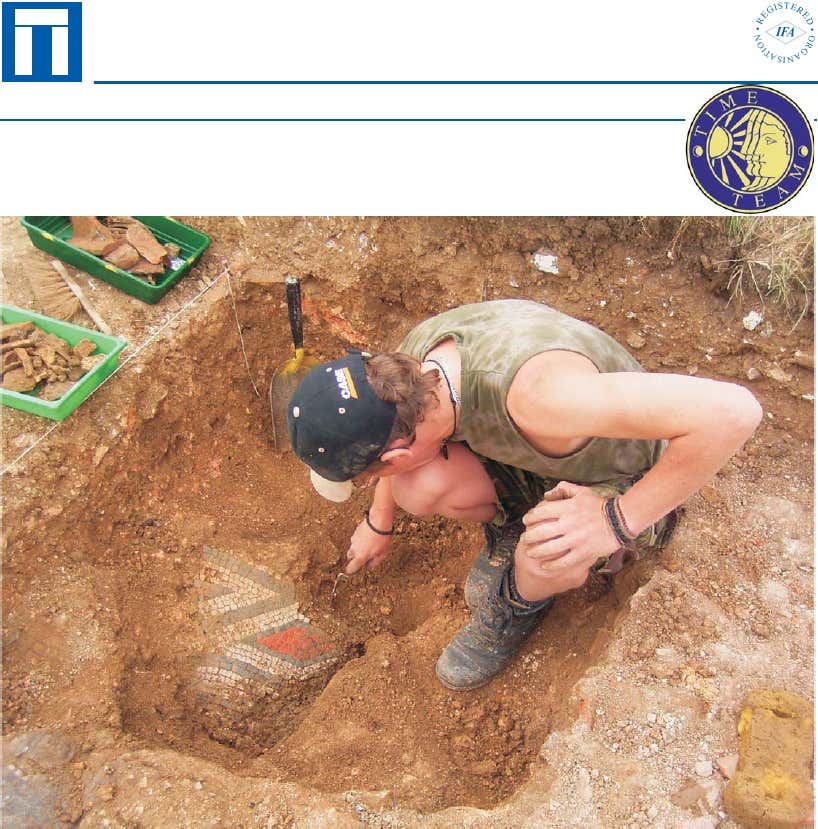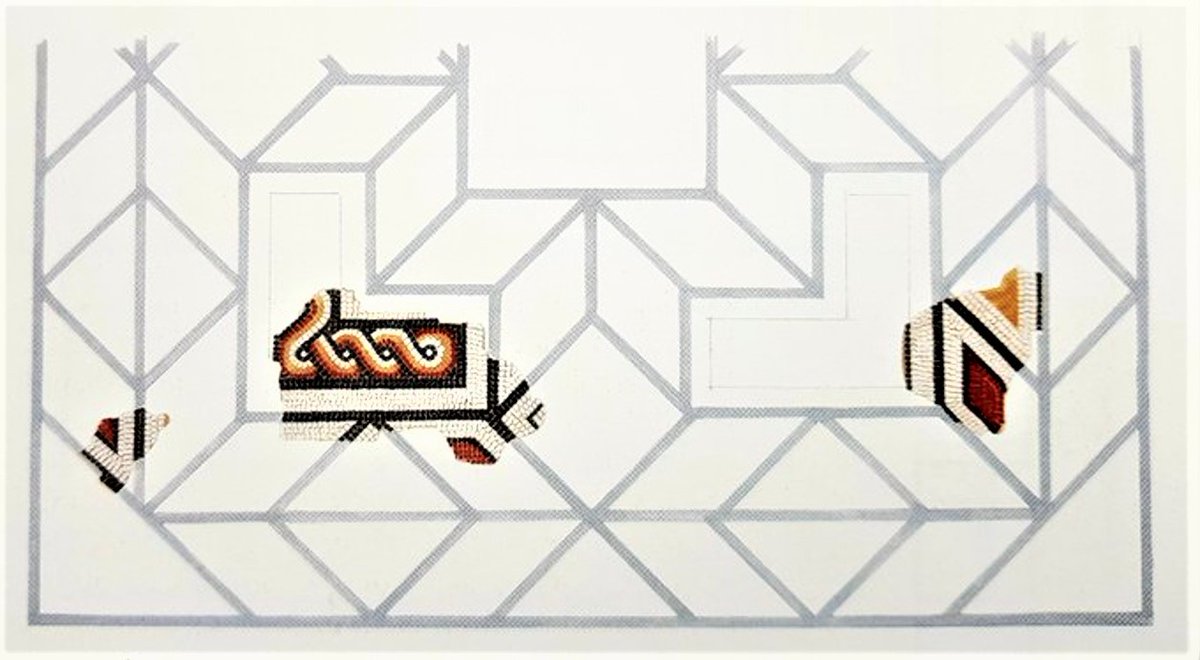Lost and Found: the #mosaic masterpieces of #Withington #Roman villa #Gloucestershire
A thread for #MosaicMonday
A thread for #MosaicMonday
The Roman villa at Withington #Gloucestershire was found in 1811
This beautiful engraving by Samuel Lysons shows the 19th century setting, in ploughed fields, with the excavators camp and the first mosaics being exposed
#MosaicMonday
This beautiful engraving by Samuel Lysons shows the 19th century setting, in ploughed fields, with the excavators camp and the first mosaics being exposed
#MosaicMonday
A number of mosaics from the Roman villa at Withington #Gloucestershire were exposed in 1811-12 and recorded in exquisite detail by the antiquarian draughtsmen Samuel Lysons (pic) and Richard Smirke
Just as well. For most, this is the only record we have
#MosaicMonday
Just as well. For most, this is the only record we have
#MosaicMonday
Sections of two 4th century corridor mosaics from the Roman villa at Withington Gloucs carefully recorded in 1812 by Samuel Lysons and Richard Smirke
Both floors were reburied at the end of the excavation
#MosaicMonday
Both floors were reburied at the end of the excavation
#MosaicMonday
Engravings of 4th century Roman geometric polychrome mosaics uncovered between 1811-12 at Withington Gloucs, from drawings made in the field by Samuel Lysons and Richard Smirke, published in 1817
#MosaicMonday
#MosaicMonday
Although the excavation strategy of the early 19th century was less (ahem) *rigorous* than today, the engravings by Samuel Lysons and Richard Smirke from Withington in Gloucestershire provide an exceptional record of the Roman mosaics exposed there in 1812
#MosaicMonday
#MosaicMonday
The centrepiece of Withington Roman villa was this 5 panel floor with Orpheus charming animals and Neptune (or Oceanus)
Much had been destroyed when recorded by Lysons and Smirke in 1812. Their engraving is the most complete record of the floor that we have
#MosaicMonday
Much had been destroyed when recorded by Lysons and Smirke in 1812. Their engraving is the most complete record of the floor that we have
#MosaicMonday
The westernmost 3 panels of the main mosaic at Withington were damaged before 1811
The engraving by Lysons and Smirke reconstructed sections of the design and speculated over a lost hunting scene
The strange aquatic beast in the centre remains mysterious https://abs.twimg.com/emoji/v2/... draggable="false" alt="😱" title="Vor Angst schreiendes Gesicht" aria-label="Emoji: Vor Angst schreiendes Gesicht">
https://abs.twimg.com/emoji/v2/... draggable="false" alt="😱" title="Vor Angst schreiendes Gesicht" aria-label="Emoji: Vor Angst schreiendes Gesicht">
#MosaicMonday
The engraving by Lysons and Smirke reconstructed sections of the design and speculated over a lost hunting scene
The strange aquatic beast in the centre remains mysterious
#MosaicMonday
The E panel of the main mosaic at Withington had a lively depiction of Orpheus playing a lyre to a fox
Around, a host of animals comprising a lion bull dog boar bear deer leopard and horse dance / chase each other
When exposed, this floor was almost complete...
#MosaicMonday
Around, a host of animals comprising a lion bull dog boar bear deer leopard and horse dance / chase each other
When exposed, this floor was almost complete...
#MosaicMonday
Although almost complete when exposed in 1812 and recorded by Lysons and Smirke, later attempts to expose and lift the Orpheus mosaic from Withington Gloucs did not go well...
...Orpheus and his fox were lost, as were several of the surrounding animals
#MosaicMonday
...Orpheus and his fox were lost, as were several of the surrounding animals
#MosaicMonday
The surviving fragments of the 4th century Withington Orpheus mosaic were dispersed on lifting
One piece, depicting a bear tamed by Orpheus’ music, was added to the collection of Bristol Institution, a forerunner of the excellent @bristolmuseum in 1825
#MosaicMonday
One piece, depicting a bear tamed by Orpheus’ music, was added to the collection of Bristol Institution, a forerunner of the excellent @bristolmuseum in 1825
#MosaicMonday
4 surviving fragments of the Orpheus mosaic from Withington Gloucs were given to the @britishmuseum in 1812
3 depict animals familiar to a Romano-British audience: a bull, a dog, a boar, a deer, 2 cockerels and 4 doves
Images © The Trustees of the British Museum
#MosaicMonday
3 depict animals familiar to a Romano-British audience: a bull, a dog, a boar, a deer, 2 cockerels and 4 doves
Images © The Trustees of the British Museum
#MosaicMonday
The 4th panel from the Withington Orpheus mosaic @britishmuseum depicts a leopard
Leopards (dancing or otherwise) weren’t common in Britain at the time and the picture has a strange cat / dog / moustachioed giraffe feel to it
© The Trustees of the British Museum
#MosaicMonday
Leopards (dancing or otherwise) weren’t common in Britain at the time and the picture has a strange cat / dog / moustachioed giraffe feel to it
© The Trustees of the British Museum
#MosaicMonday
The central panel of the Orpheus mosaic at Withington recorded in 1812 had an off centre depiction of Neptune / Oceanus with lobster claws and Dolphins
The awkward and irregular design perhaps suggests it may be a later addition
#MosaicMonday
The awkward and irregular design perhaps suggests it may be a later addition
#MosaicMonday
The curiously designed Neptune / Oceanus panel from the 4th century Roman mosaic at Withington villa Gloucs was lifted in 1812 and given to the @britishmuseum where it can be seen today
Image © The Trustees of the British Museum
#MosaicMonday
Image © The Trustees of the British Museum
#MosaicMonday
The Withington villa #Gloucestershire, dug and backfilled in 1812, was reinvestigated in 2005 by @thetimeteam
The episode was screened as part of season 13 in January 2006
A technical report on the dig by @wessexarch can be found here:
https://www.wessexarch.co.uk/sites/default/files/59468_Withington%20Gloucs.pdf
https://www.wessexarch.co.uk/sites/def... href="https://twtext.com//hashtag/MosaicMonday"> #MosaicMonday
The episode was screened as part of season 13 in January 2006
A technical report on the dig by @wessexarch can be found here:
https://www.wessexarch.co.uk/sites/default/files/59468_Withington%20Gloucs.pdf
Geophysical survey conducted during @thetimeteam investigation of Withington villa in 2005 placed the site in context whilst excavation revealed areas of the structure, including the floors, still survived
Details from @wessexarch report:
https://www.wessexarch.co.uk/sites/default/files/59468_Withington%20Gloucs.pdf
https://www.wessexarch.co.uk/sites/def... href="https://twtext.com//hashtag/MosaicMonday"> #MosaicMonday
Details from @wessexarch report:
https://www.wessexarch.co.uk/sites/default/files/59468_Withington%20Gloucs.pdf
Pieces of mosaic from the baths of Withington villa, unexcavated in 1812, were discovered during @thetimeteam dig in 2005
These were recorded by David Neal for the @SocAntiquaries *Roman Mosaics of Britain* volume 4
The villa has been returned to the soil
#MosaicMonday
These were recorded by David Neal for the @SocAntiquaries *Roman Mosaics of Britain* volume 4
The villa has been returned to the soil
#MosaicMonday

 Read on Twitter
Read on Twitter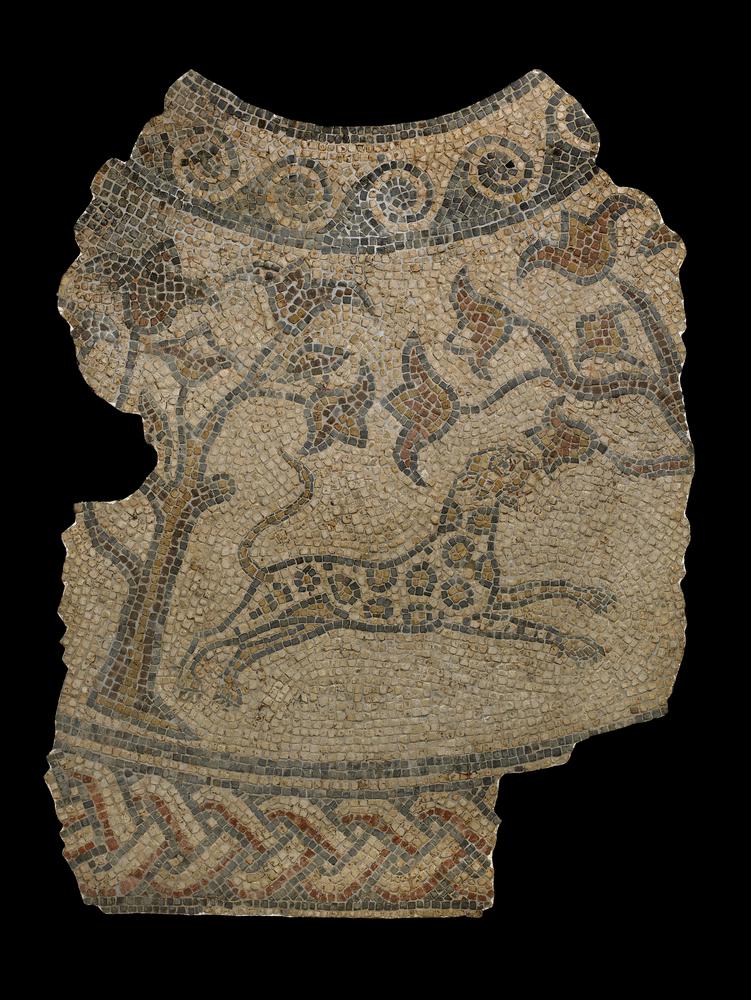
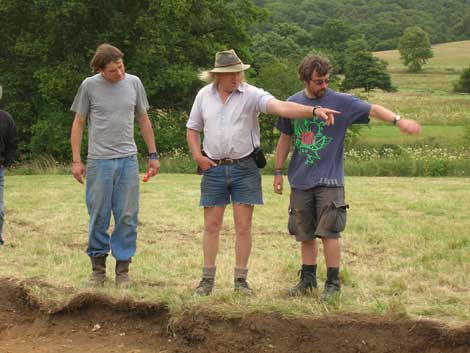
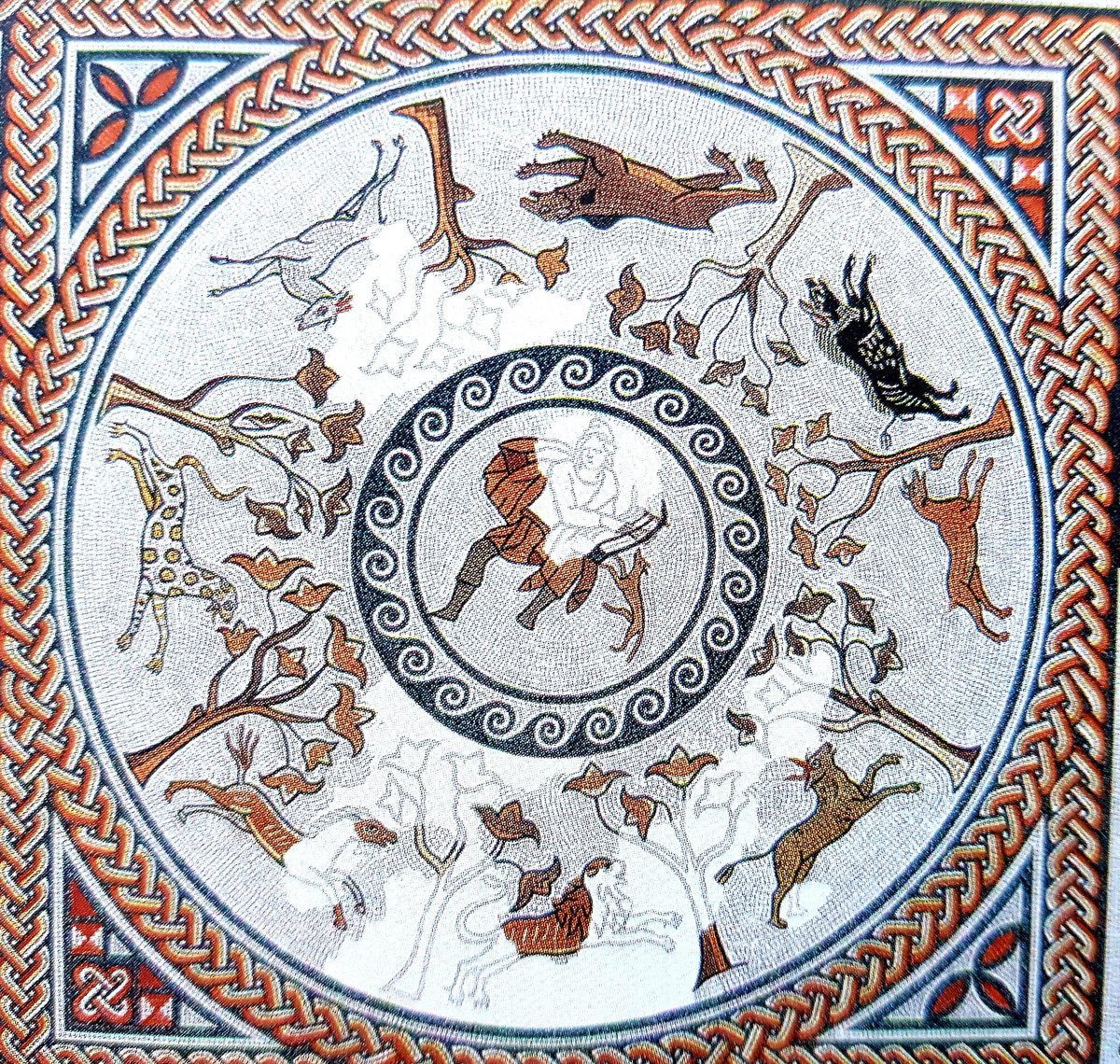
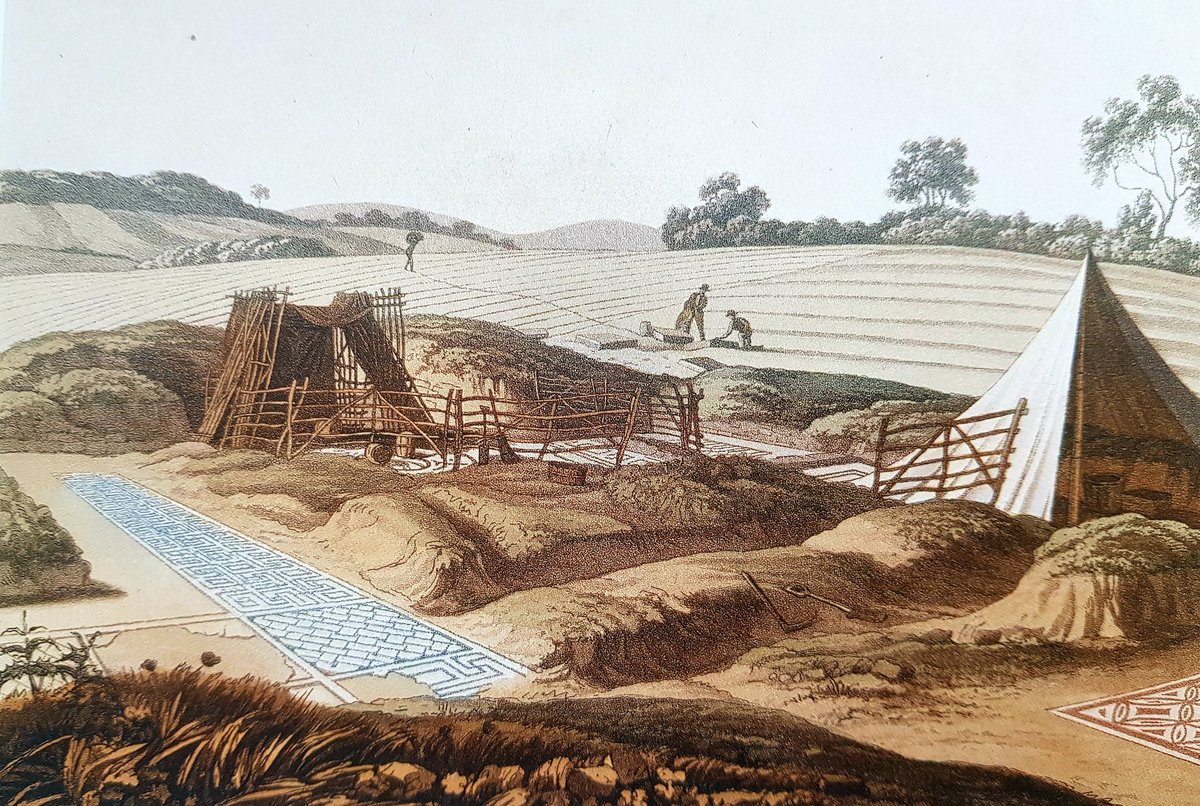
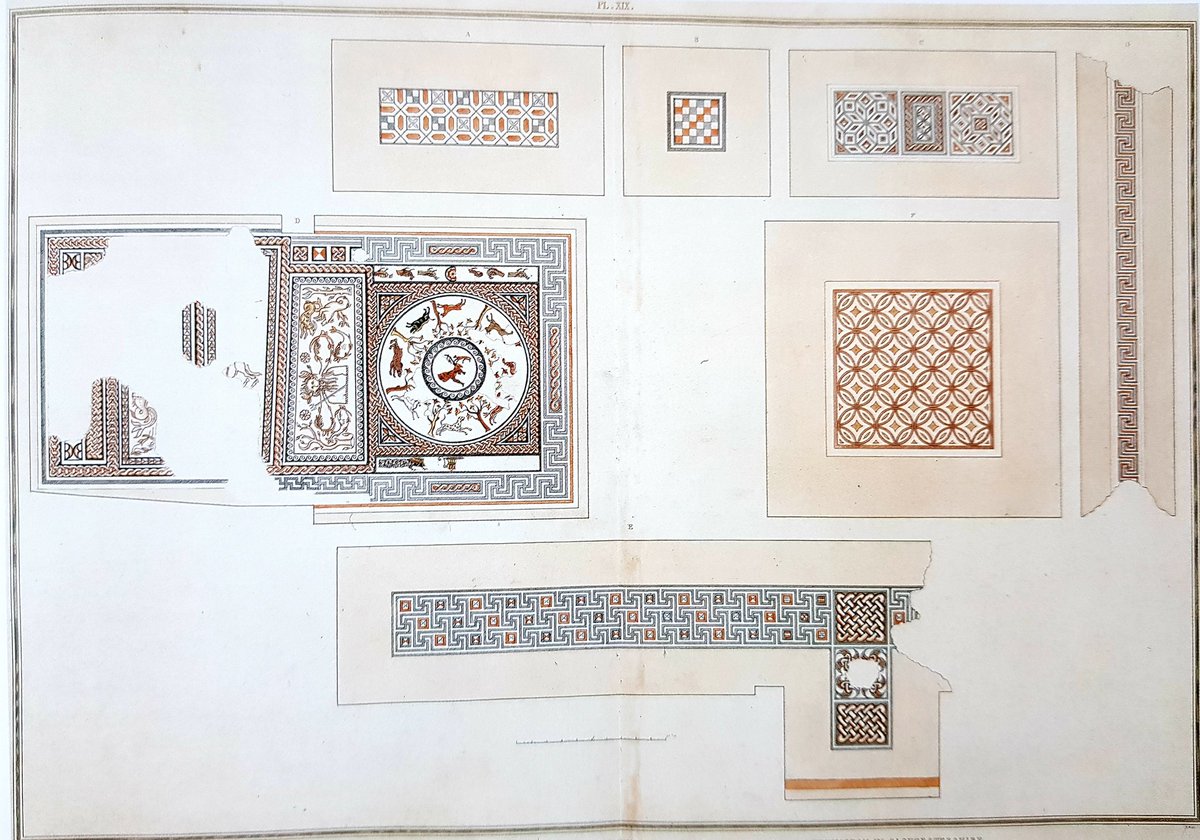
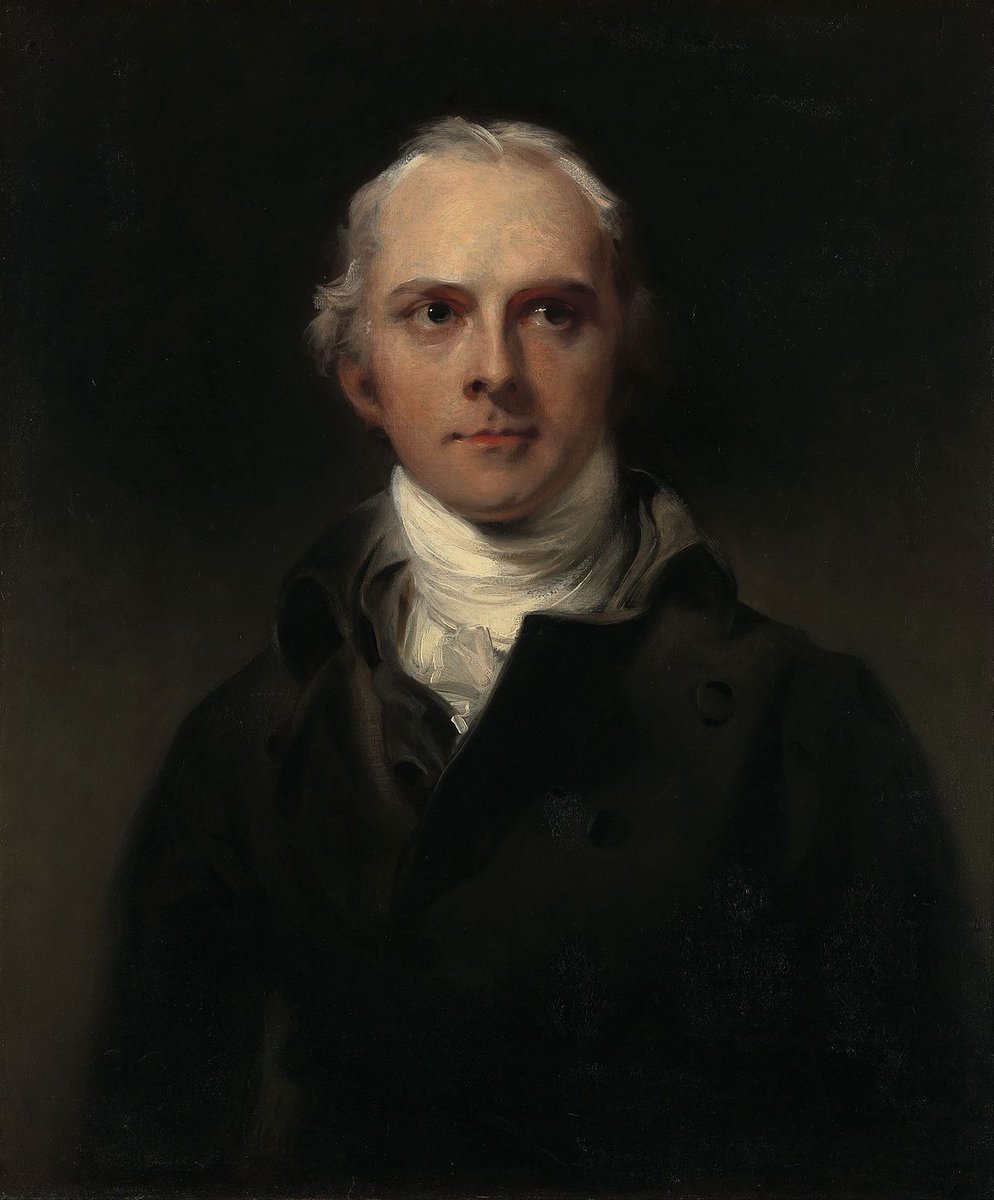
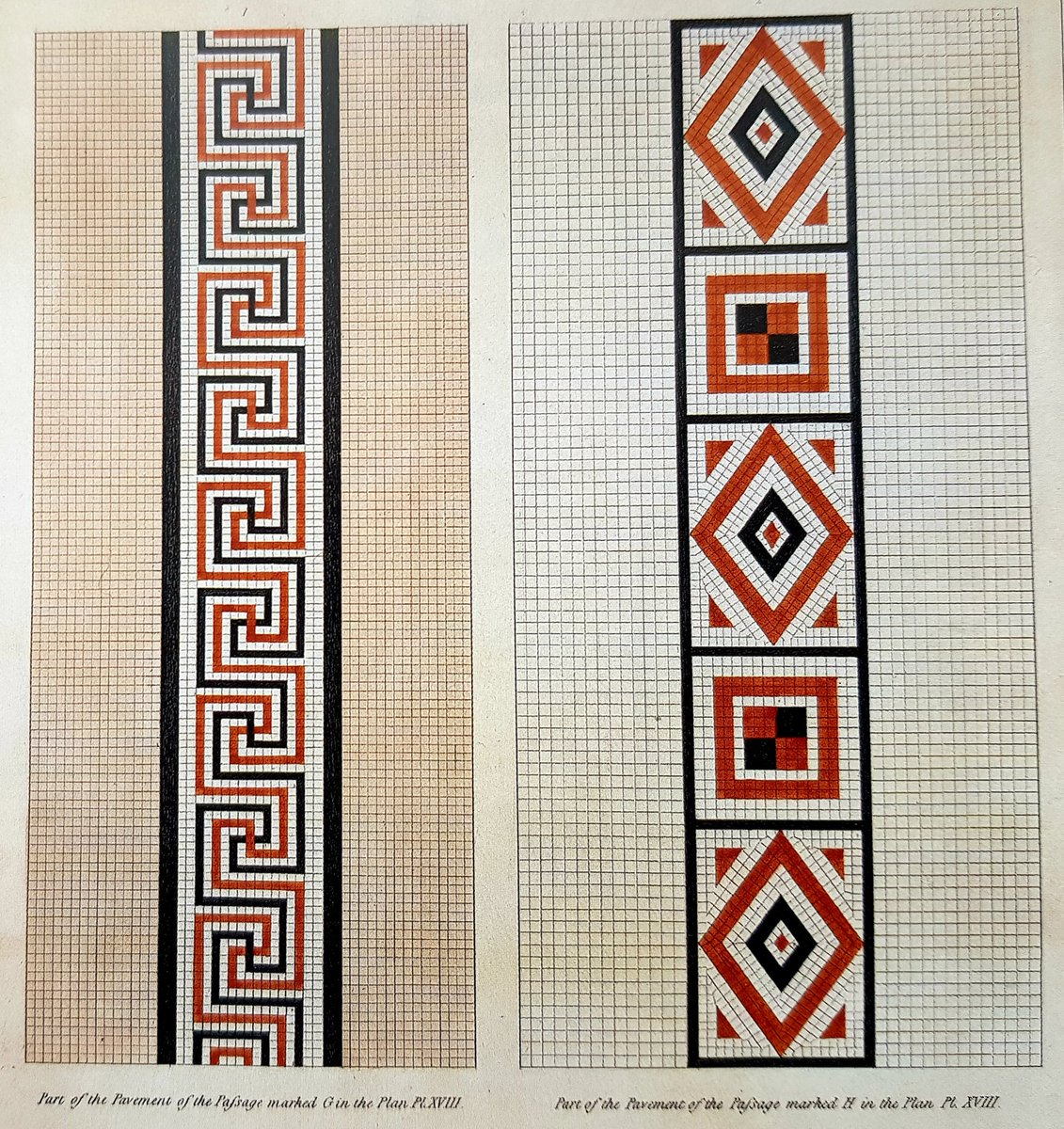
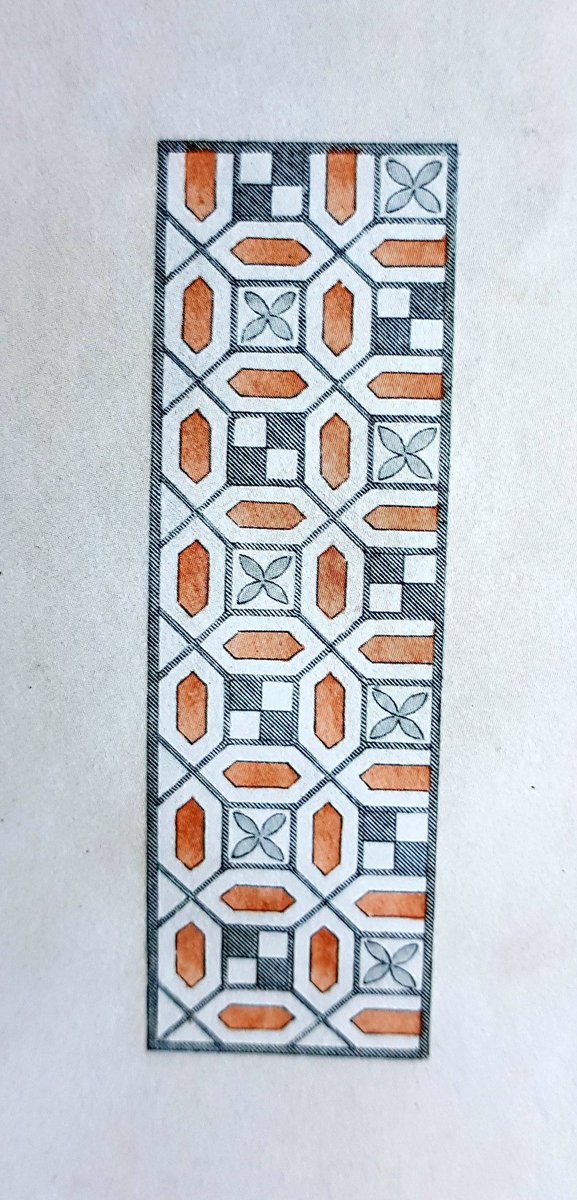
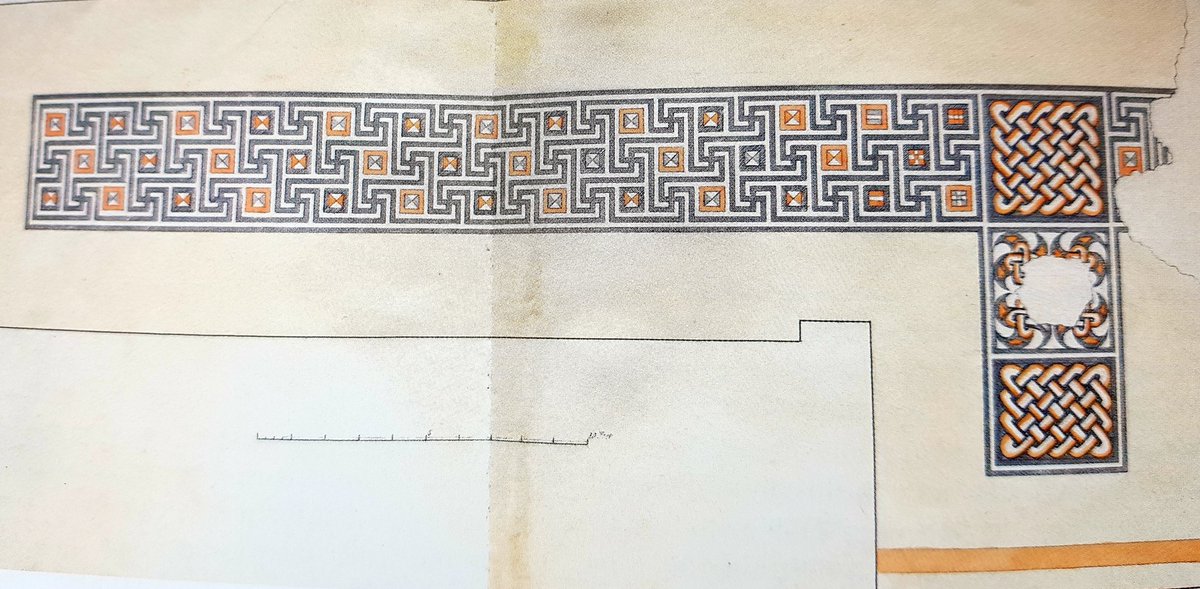
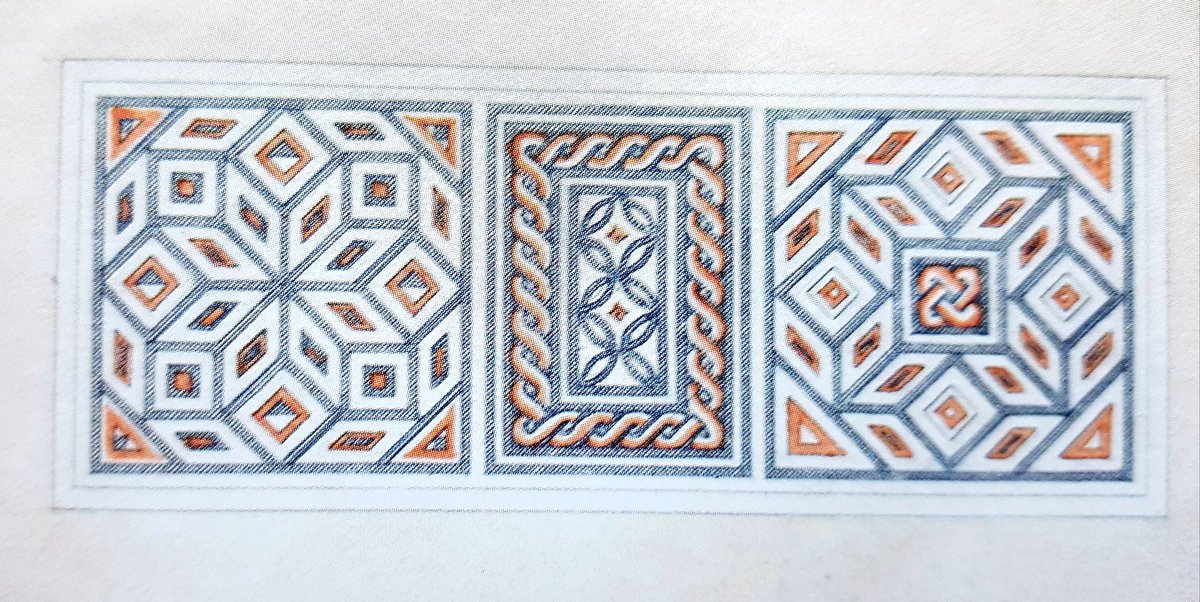
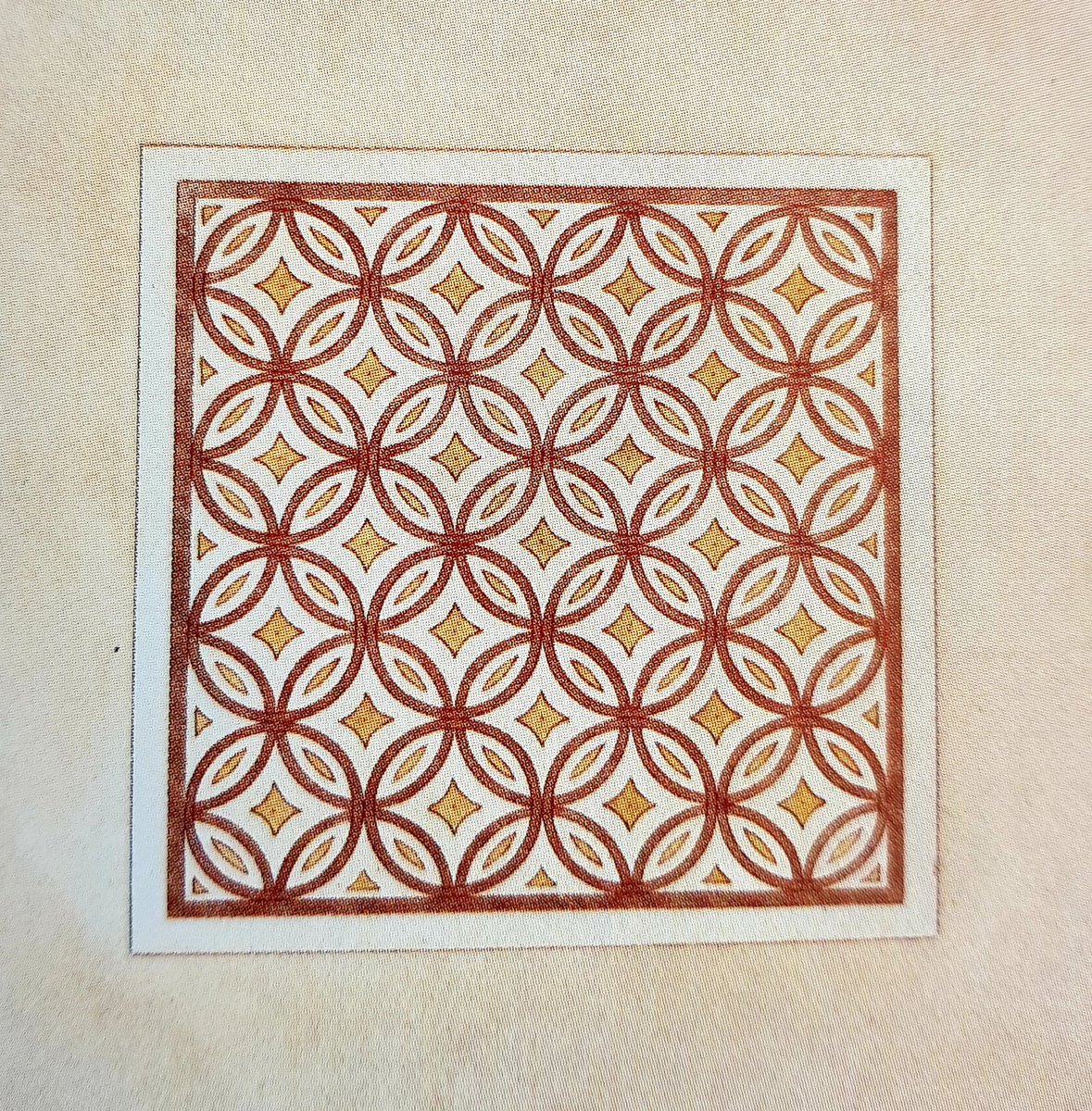
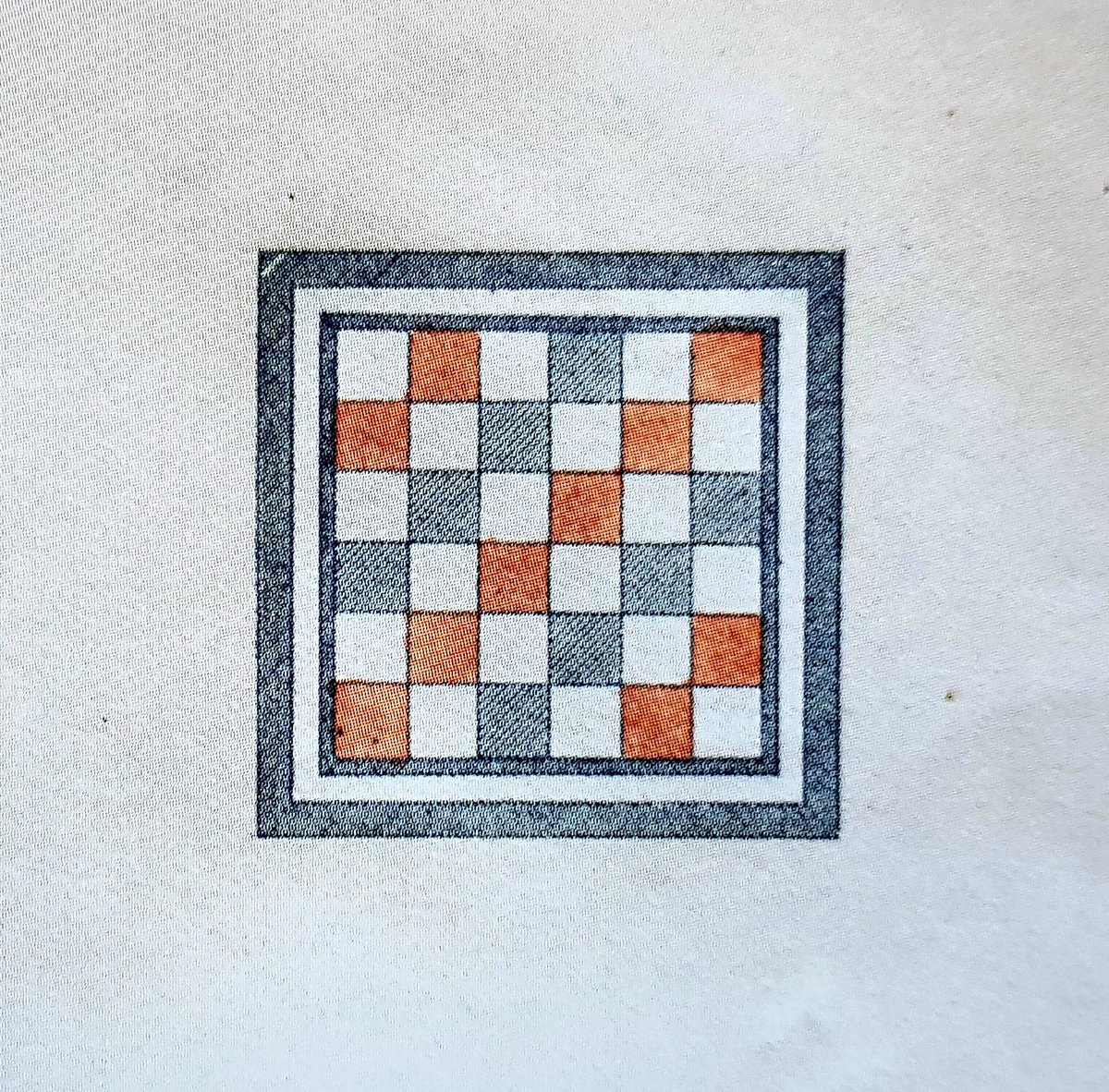
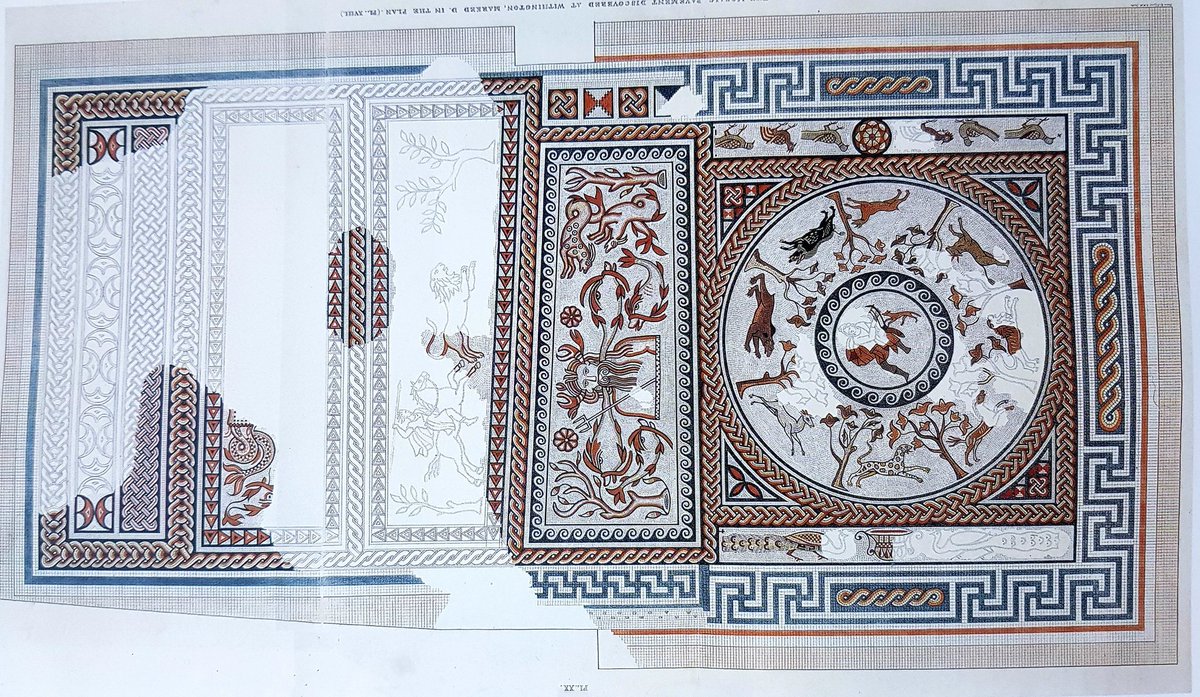
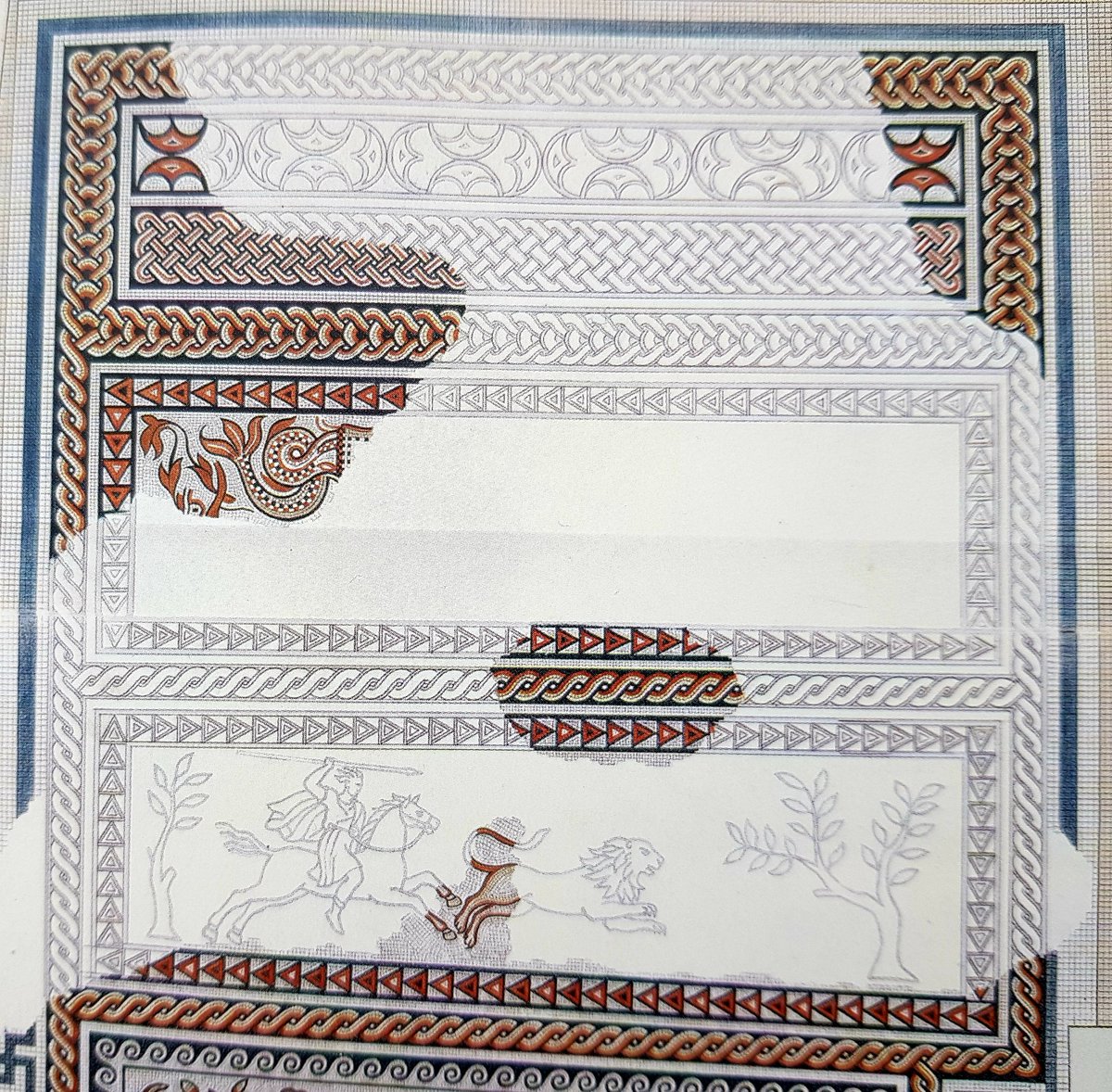 #MosaicMonday" title="The westernmost 3 panels of the main mosaic at Withington were damaged before 1811The engraving by Lysons and Smirke reconstructed sections of the design and speculated over a lost hunting sceneThe strange aquatic beast in the centre remains mysterious https://abs.twimg.com/emoji/v2/... draggable="false" alt="😱" title="Vor Angst schreiendes Gesicht" aria-label="Emoji: Vor Angst schreiendes Gesicht"> #MosaicMonday" class="img-responsive" style="max-width:100%;"/>
#MosaicMonday" title="The westernmost 3 panels of the main mosaic at Withington were damaged before 1811The engraving by Lysons and Smirke reconstructed sections of the design and speculated over a lost hunting sceneThe strange aquatic beast in the centre remains mysterious https://abs.twimg.com/emoji/v2/... draggable="false" alt="😱" title="Vor Angst schreiendes Gesicht" aria-label="Emoji: Vor Angst schreiendes Gesicht"> #MosaicMonday" class="img-responsive" style="max-width:100%;"/>
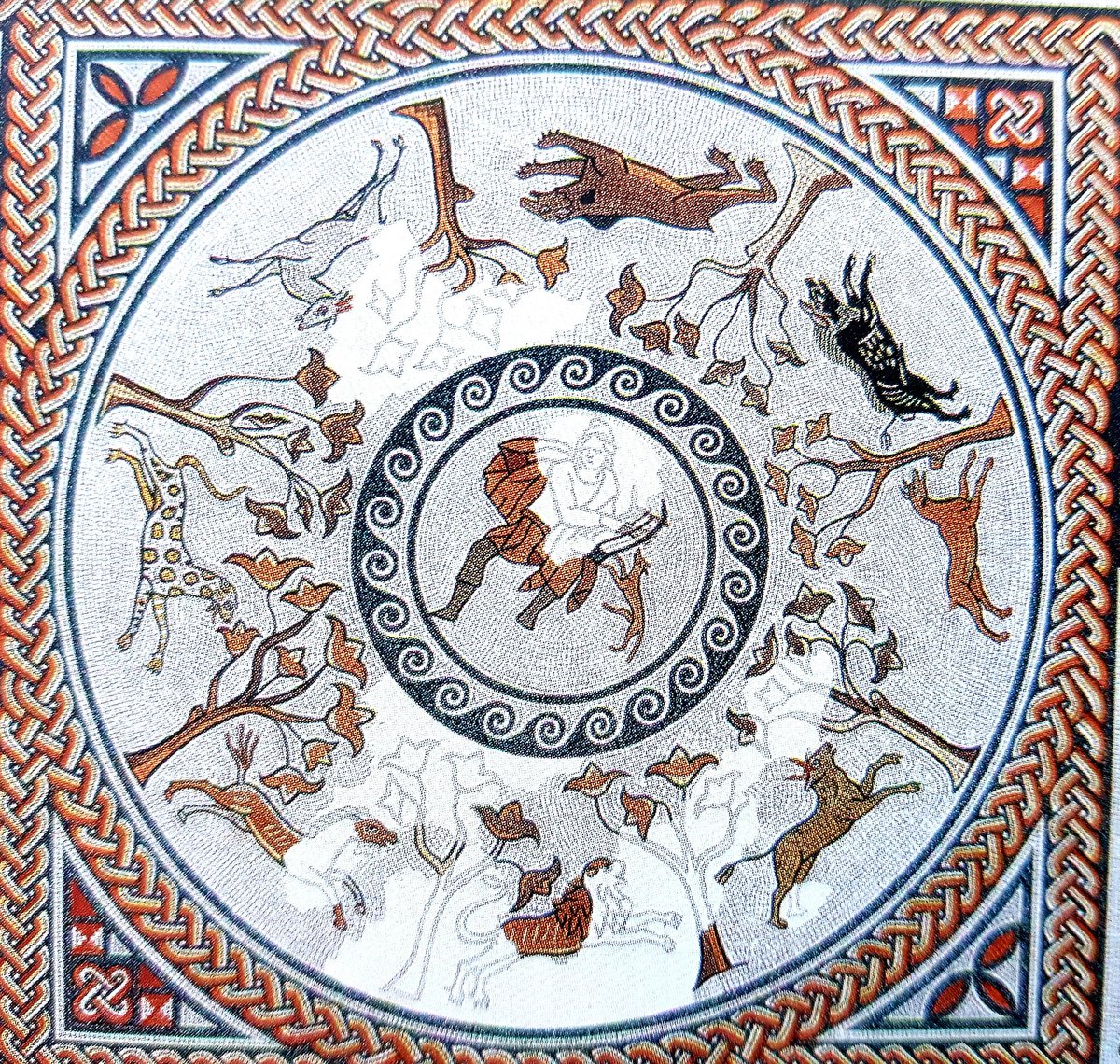
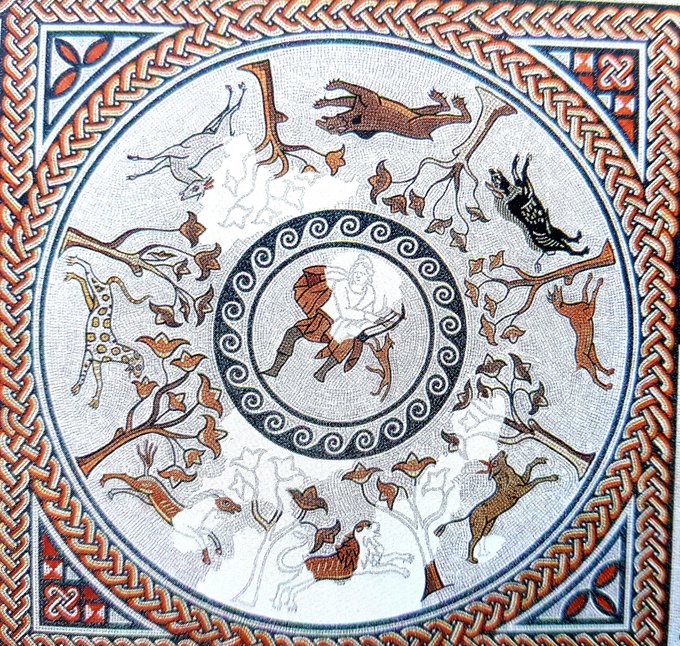
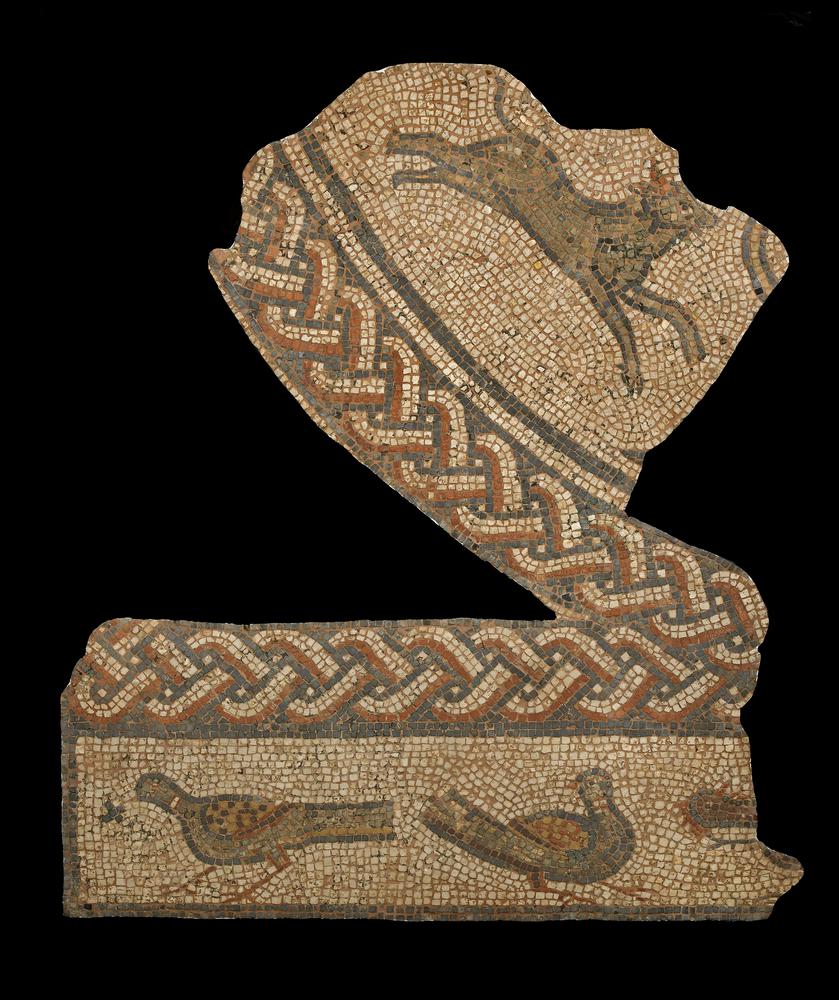
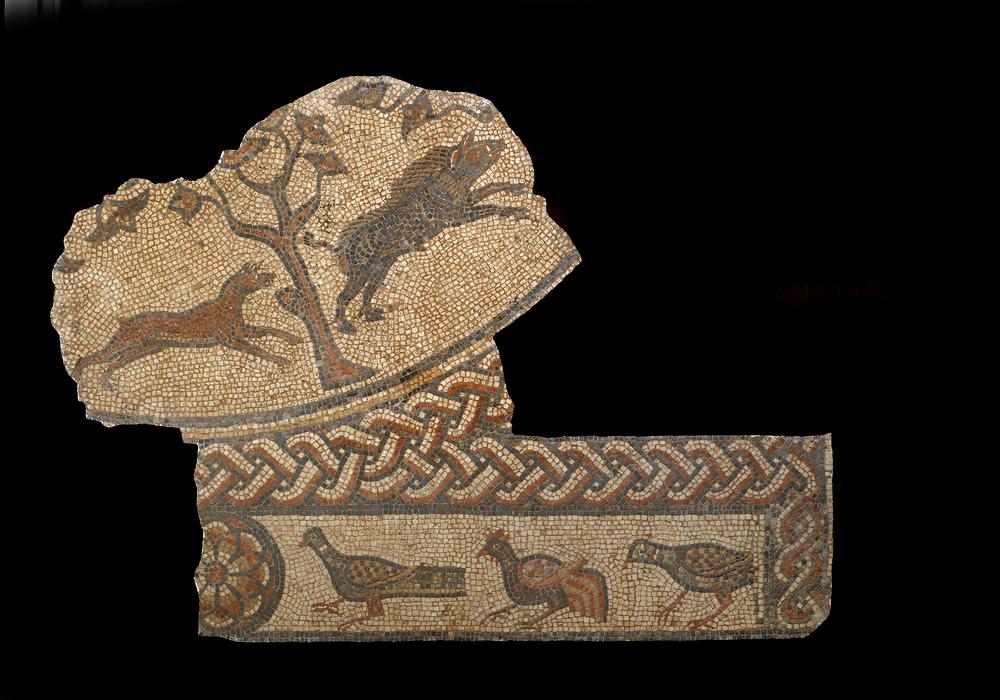
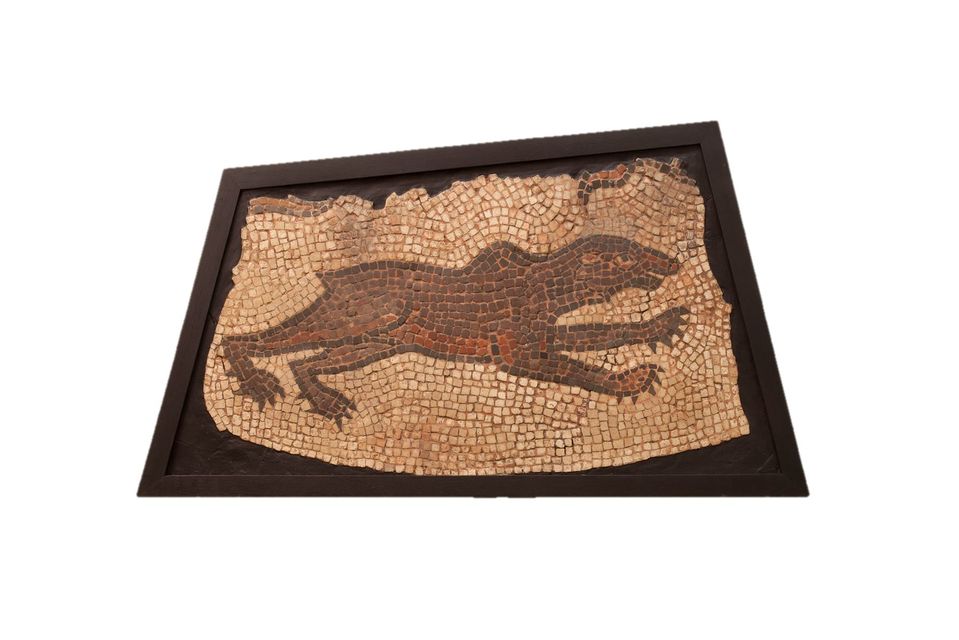
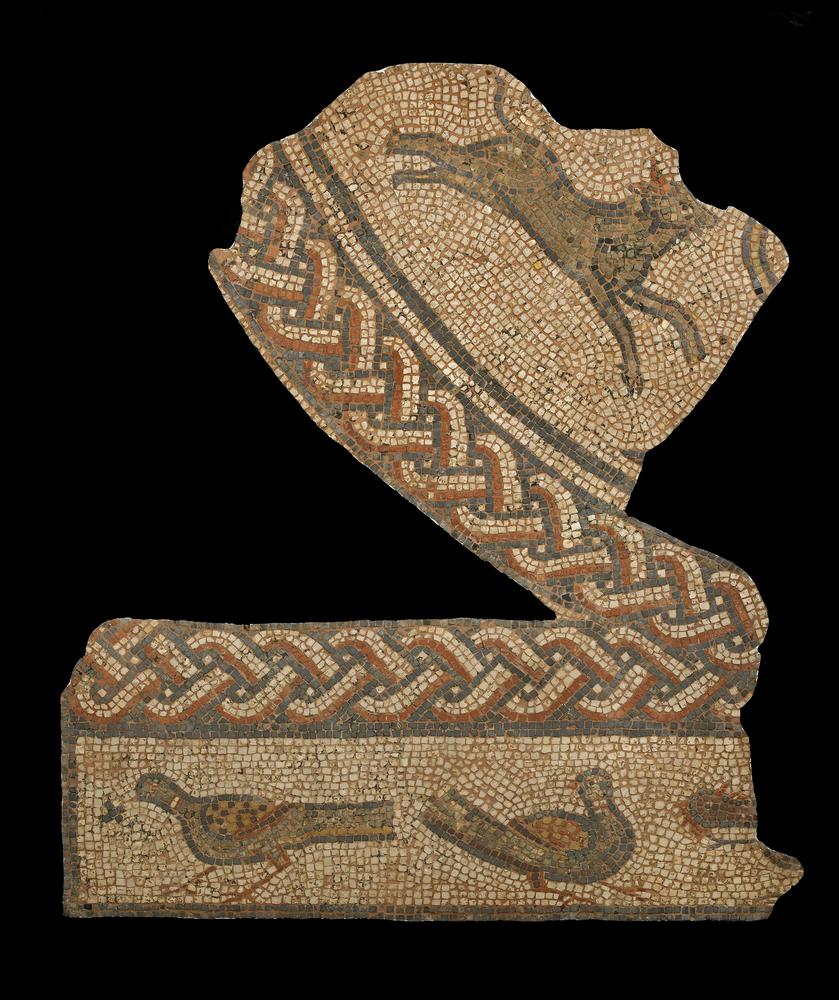

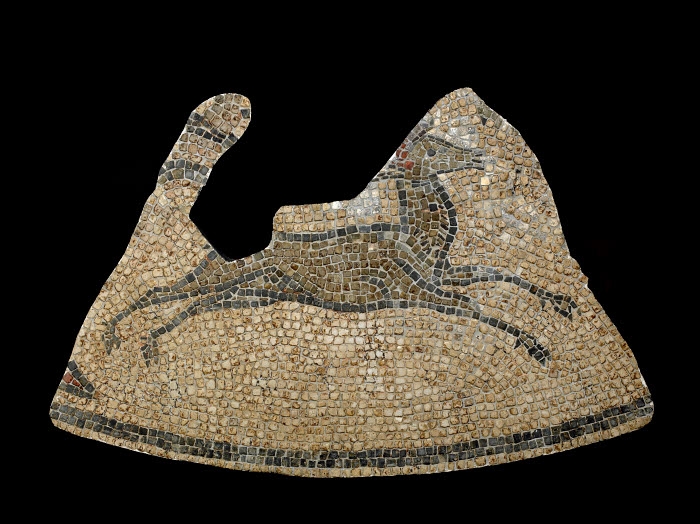
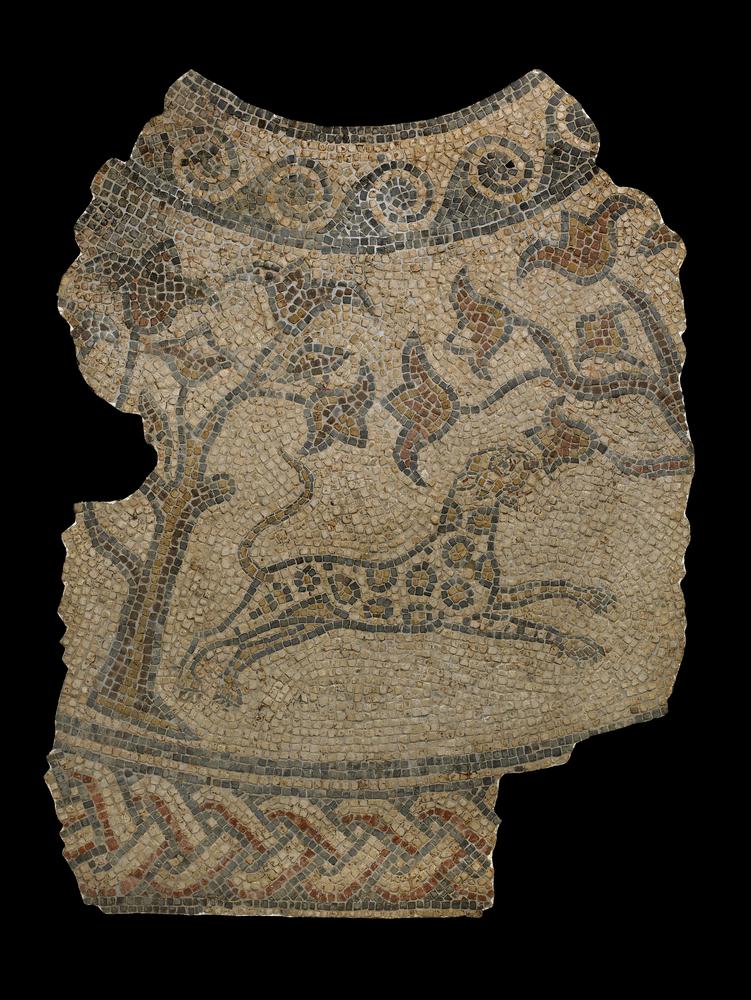
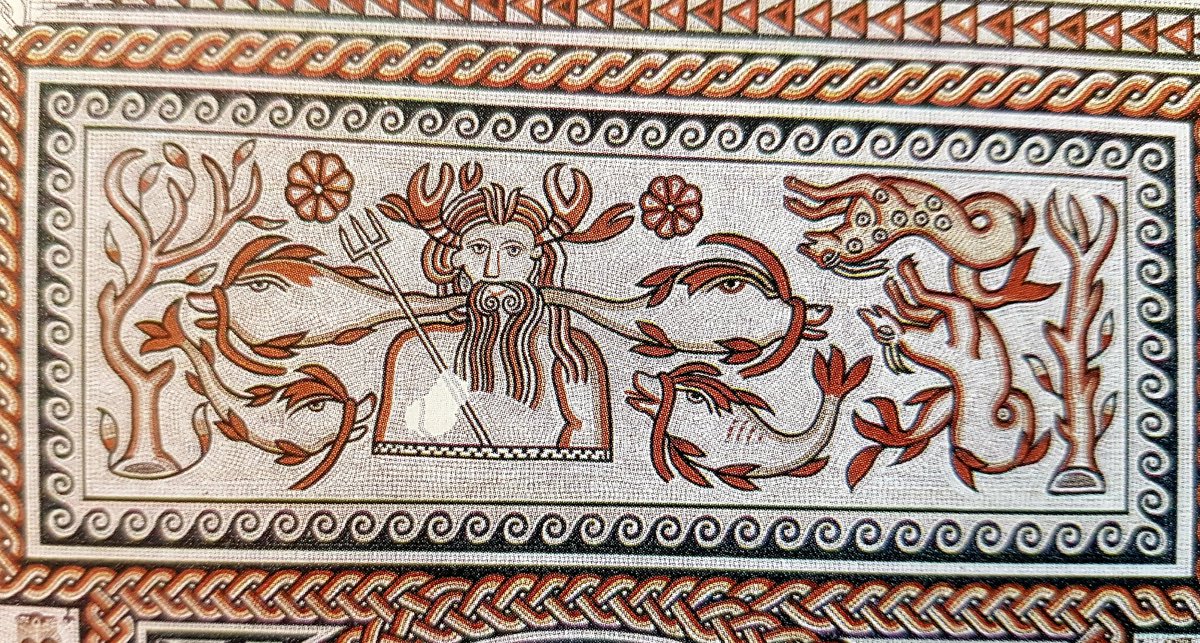
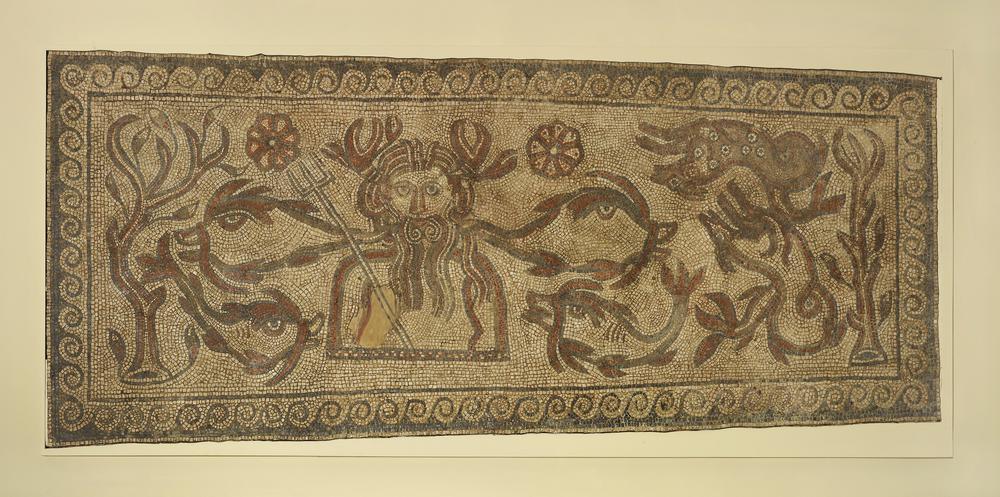
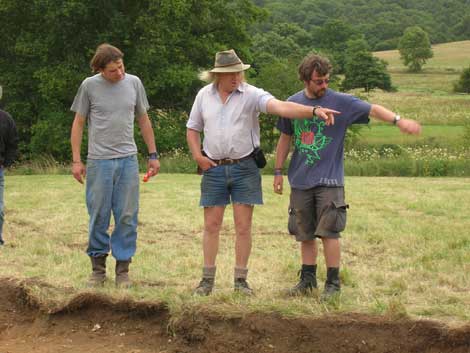 #MosaicMonday" title="The Withington villa #Gloucestershire, dug and backfilled in 1812, was reinvestigated in 2005 by @thetimeteam The episode was screened as part of season 13 in January 2006A technical report on the dig by @wessexarch can be found here: https://www.wessexarch.co.uk/sites/def... href="https://twtext.com//hashtag/MosaicMonday"> #MosaicMonday">
#MosaicMonday" title="The Withington villa #Gloucestershire, dug and backfilled in 1812, was reinvestigated in 2005 by @thetimeteam The episode was screened as part of season 13 in January 2006A technical report on the dig by @wessexarch can be found here: https://www.wessexarch.co.uk/sites/def... href="https://twtext.com//hashtag/MosaicMonday"> #MosaicMonday">
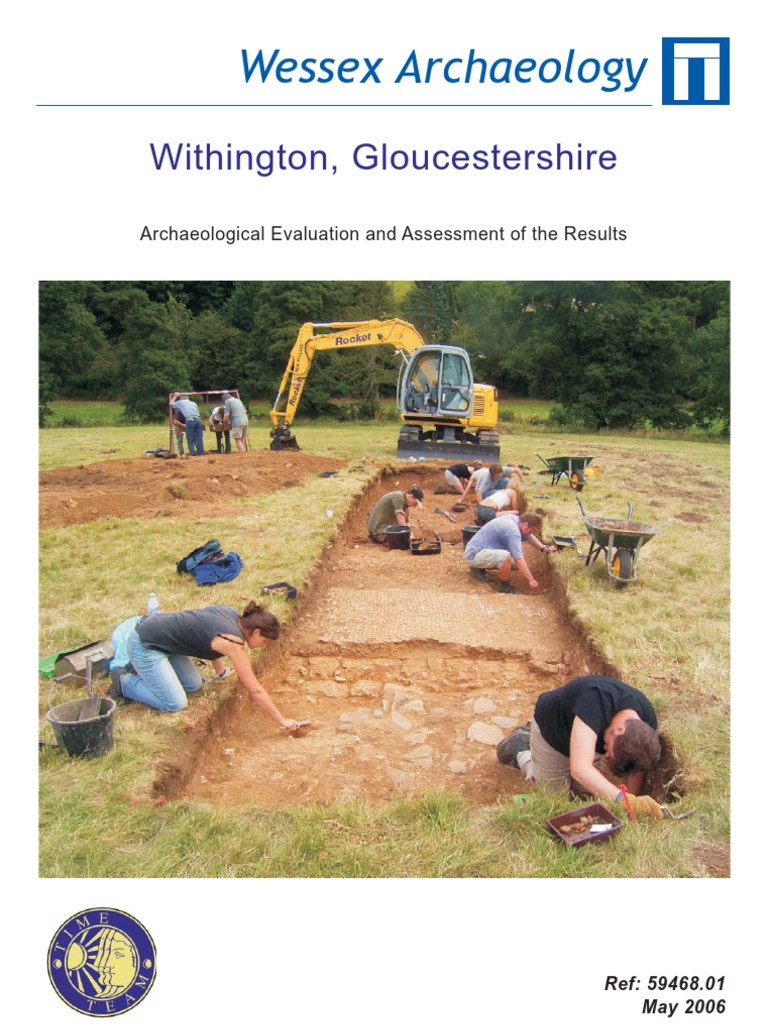 #MosaicMonday" title="The Withington villa #Gloucestershire, dug and backfilled in 1812, was reinvestigated in 2005 by @thetimeteam The episode was screened as part of season 13 in January 2006A technical report on the dig by @wessexarch can be found here: https://www.wessexarch.co.uk/sites/def... href="https://twtext.com//hashtag/MosaicMonday"> #MosaicMonday">
#MosaicMonday" title="The Withington villa #Gloucestershire, dug and backfilled in 1812, was reinvestigated in 2005 by @thetimeteam The episode was screened as part of season 13 in January 2006A technical report on the dig by @wessexarch can be found here: https://www.wessexarch.co.uk/sites/def... href="https://twtext.com//hashtag/MosaicMonday"> #MosaicMonday">
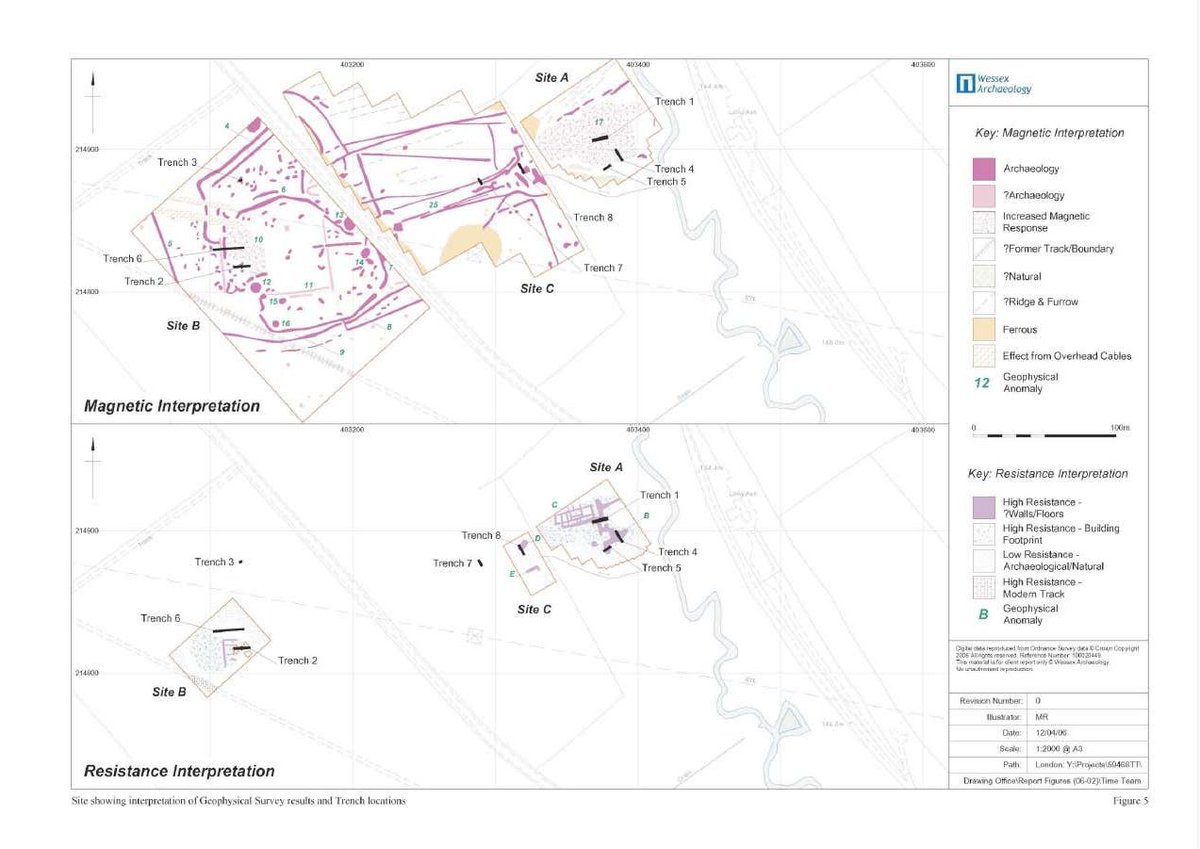 #MosaicMonday" title="Geophysical survey conducted during @thetimeteam investigation of Withington villa in 2005 placed the site in context whilst excavation revealed areas of the structure, including the floors, still survivedDetails from @wessexarch report: https://www.wessexarch.co.uk/sites/def... href="https://twtext.com//hashtag/MosaicMonday"> #MosaicMonday">
#MosaicMonday" title="Geophysical survey conducted during @thetimeteam investigation of Withington villa in 2005 placed the site in context whilst excavation revealed areas of the structure, including the floors, still survivedDetails from @wessexarch report: https://www.wessexarch.co.uk/sites/def... href="https://twtext.com//hashtag/MosaicMonday"> #MosaicMonday">
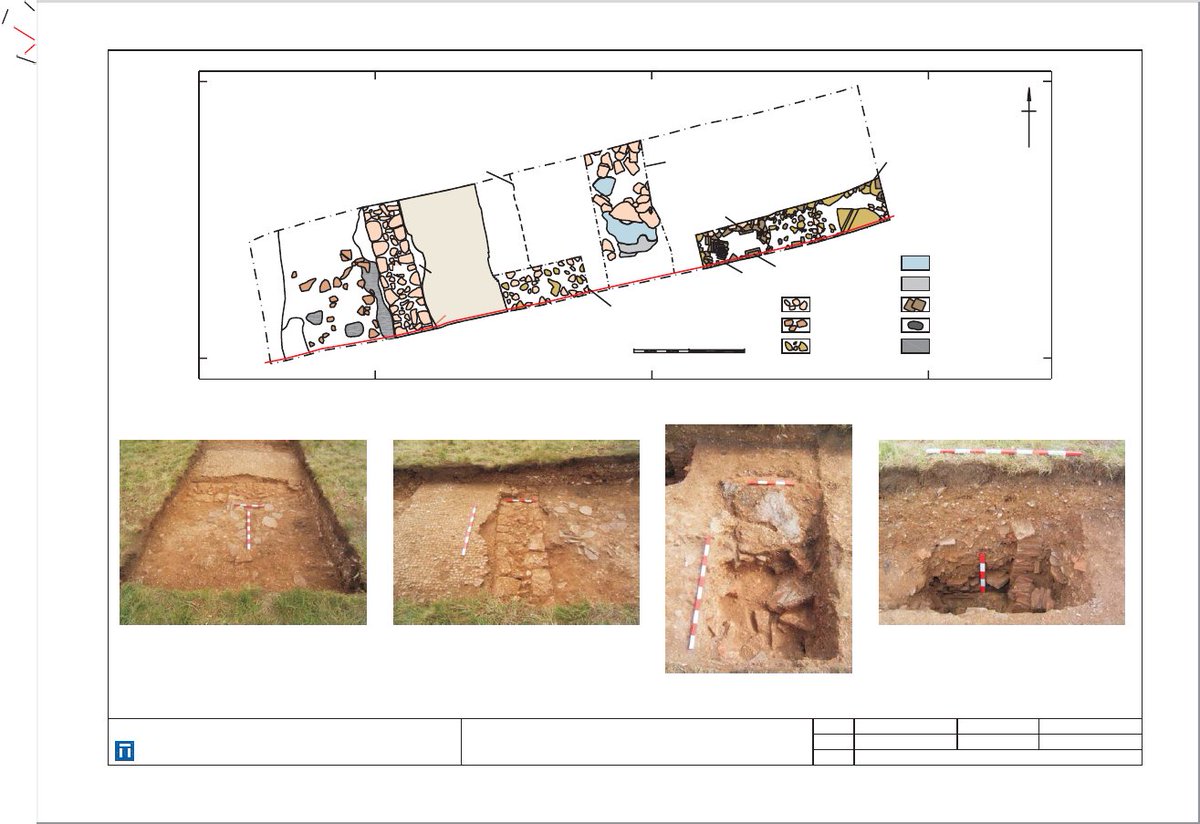 #MosaicMonday" title="Geophysical survey conducted during @thetimeteam investigation of Withington villa in 2005 placed the site in context whilst excavation revealed areas of the structure, including the floors, still survivedDetails from @wessexarch report: https://www.wessexarch.co.uk/sites/def... href="https://twtext.com//hashtag/MosaicMonday"> #MosaicMonday">
#MosaicMonday" title="Geophysical survey conducted during @thetimeteam investigation of Withington villa in 2005 placed the site in context whilst excavation revealed areas of the structure, including the floors, still survivedDetails from @wessexarch report: https://www.wessexarch.co.uk/sites/def... href="https://twtext.com//hashtag/MosaicMonday"> #MosaicMonday">
 #MosaicMonday" title="Geophysical survey conducted during @thetimeteam investigation of Withington villa in 2005 placed the site in context whilst excavation revealed areas of the structure, including the floors, still survivedDetails from @wessexarch report: https://www.wessexarch.co.uk/sites/def... href="https://twtext.com//hashtag/MosaicMonday"> #MosaicMonday">
#MosaicMonday" title="Geophysical survey conducted during @thetimeteam investigation of Withington villa in 2005 placed the site in context whilst excavation revealed areas of the structure, including the floors, still survivedDetails from @wessexarch report: https://www.wessexarch.co.uk/sites/def... href="https://twtext.com//hashtag/MosaicMonday"> #MosaicMonday">
